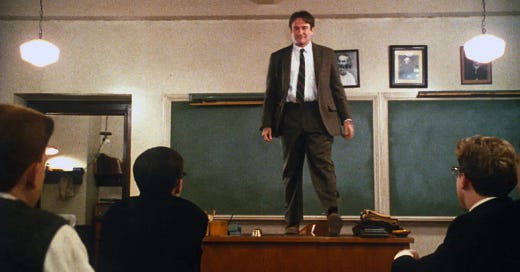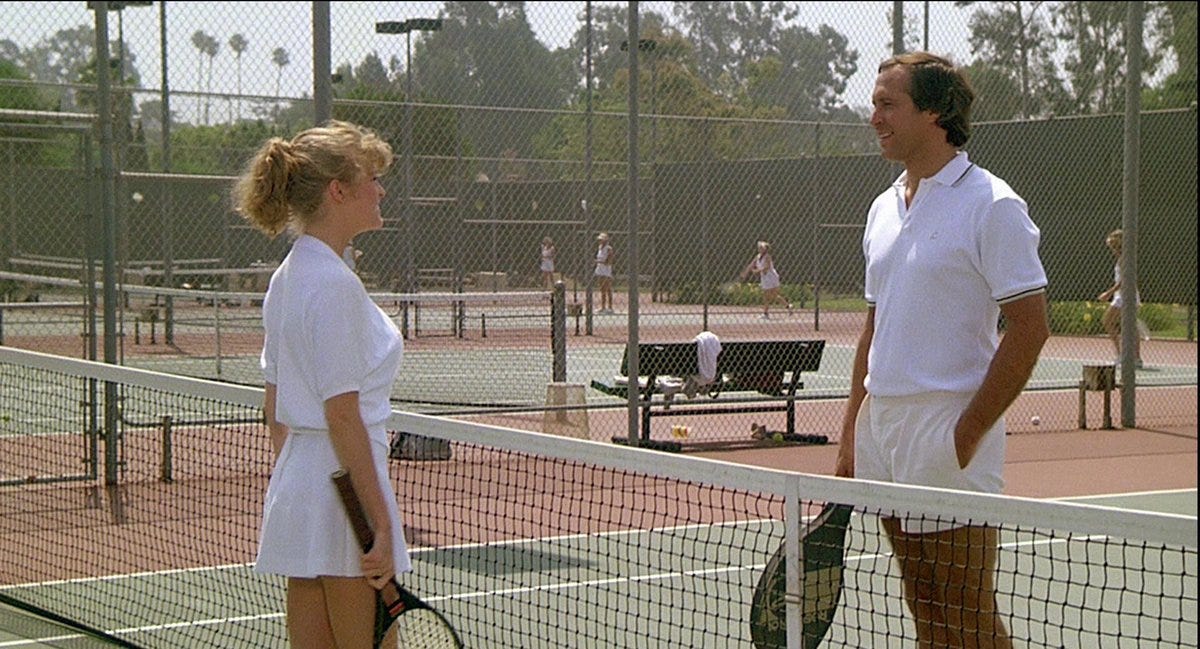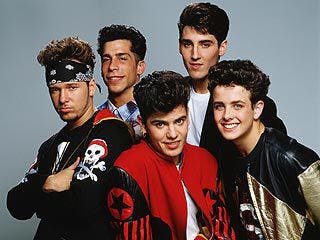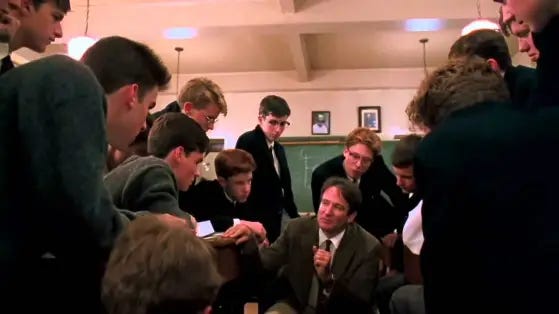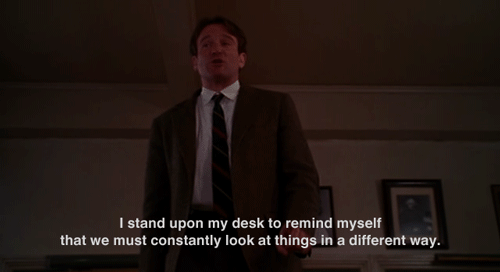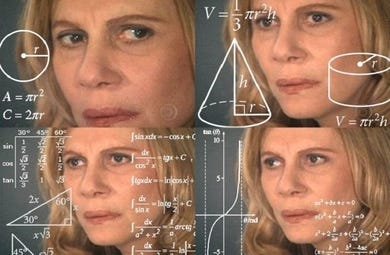Dead Poets Society, John Keating and Bubble Wrap Appreciation Day
What Dead Poets Society can teach us about bubbles
“I stand upon my desk to remind myself that we must constantly look at things in a different way. “ - John Keating, Dead Poets Society
These days we have holidays and appreciation days for pretty much everything. Need some proof? Ok, well this past week on January 27th we celebrated Bubble Wrap Appreciation Day.
But what if I told you that “the should have been the 1989 Academy Award winning movie” - Dead Poets Society - can teach us quite a bit about bubbles.
No not the bubbles in a bath or the bubbles in the wrap that we apparently celebrate each year or even the bubbles many of us blew back in the ‘80s while consuming handfuls of Big League Chew. The bubbles that Dead Poets Society taught us about are the societal bubbles that we consistently find ourselves in both in our life and work. Sometimes it’s our fault for not expanding our knowledge base via changes in our routines or social circles but most of the time we just find ourselves staying in our comfort zone.
Before we connect the proverbial dots here let’s time travel back to June of 1989 when Dead Poets Society was released in theaters.
My Life in June 1989
That summer, I once again found myself with a job as a bellman, which is something I would do again at Disney my first year out of college in 1993. This bellman gig in the summer of 1989 was at a hotel just outside my hometown of Baltimore, MD.
As I recall, the hotel had a private racquet club attached to it but unfortunately did not come with its own John Cocktoastin, the Scottish-Romanian tennis-playing alias of Chevy Chase’s character Fletch in the 1985 movie by the same name.
So because Dead Poets Society was a turn toward the dramatic for Robin Williams at the time, this story from the summer of 1989 will also be a turn from the hopefully comedic and definitely self-deprecating stories that I typically share.
That summer, I was home from my freshman year of college and happy to have a good job that would give me more than pizza-and-beer money for my sophomore year. The best part was that I was working with my two best friends — Chris and Dexter. They actually got me the job before I was home from college when their manager took them at their word that I was enough of an upstanding citizen and intelligent enough to take luggage to and from rooms, as well as drive the airport shuttle when necessary.
Just five short years later, in 1994, Chris would die alone late at night in a single-car accident. He was 24 years old. And then in 2008, Dexter would also die alone in his sleep, leaving behind a son who was just turning two years old. Dexter was 37. These were the guys who I was supposed to grow old with, but by my late 30s, they were both gone.
I’m so grateful for the summer of ’89 and the time that I got to spend with my two best friends.
Pop Culture in June 1989
Okay, enough with the real-life stuff. Geez, Clews. This is supposed to be fun. Alrighty, let’s get back to talking 1989 and the pop culture that we were enjoying and consuming. The Top 40 charts in June of 1989 included three hair-metal bands, an awesome musical sound and genre that unfortunately Grunge would swallow whole just a few years later.
Cinderella clocked in with the ballad “Coming Home” while Warrant continued to tell us that the “Down Boys” were going somewhere but didn’t actually tell us where, and Guns N’ Roses had a top-10 hit in their ballad, “Patience.” We can argue later whether they were truly a hair-metal band. Actually they weren’t but since I said three I had to find one that was close.
One of my favorites, Neneh Cherry, was sitting at #5 with still one of the best hip-hop songs ever, “Buffalo Stance.” Another one of my favorites, “Send Me an Angel” by Real Life was hanging on at #40, and the boy band of boy bands, New Kids on the Block (now often called NKOTB), were at #2 with “I’ll Be Loving You Forever.” What was it with ballads that summer?
In television, 21 Jump Street, a drama about a group of under-cover cops posing as high schoolers, was enjoying a solid second season while a reality show that premiered in 1988 about real cops and criminals, America’s Most Wanted, was a hit as a 30-minute show that was quickly given a one-hour time slot in 1989. After beginning as a series of specials in 1987, Unsolved Mysteries also earned a weekly one-hour time slot in the summer of 1989, while we said goodbye to The Facts of Life.
At the box office, well, things were absolutely amazing, as usual. Spike Lee’s spot-on commentary on society at the time, Do the Right Thing, was finishing a pretty good run; Lloyd Dobler was still being his charismatic kick-boxing self in Say Anything; Tom Cruise and Dustin Hoffman were still bringing in the $2.00 movie tickets and soon-to-be awards in Rain Man (which was still in thetop 15 even though it was released on December 16th of 1987!).
Road House (with my man, Patrick Swayze), Field of Dreams, Ghostbusters 2, Michael Keaton as Batman, and Indiana Jones and The Last Crusade were all in the top ten with the latter sitting at #1 overall. Damn, it was a great time to be alive!
And sitting at #4 was a Robin Williams-led drama called Dead Poets Society, which told the story of John Keating (played by Williams), a new English professor at an elite preparatory boys’ school, who shuns tradition to teach the boys in a maverick and unorthodox way.
So many of us know Robin Williams for the joy and laughter he brought us over decades.
And laugh we did! But he was also an amazing dramatic actor and Dead Poets Society was one of his best.
Dead Poets Society - A Plot Synopsis
Robin Williams plays John Keating a teacher at a boarding school. He's a maverick to say the least.
The kids are told by their families that they will live life from birth to death exactly as their families desire. There will be no deviation from the course that has been set for them. Keating says "nonsense boys" and teaches them to be who they want to be. To go against the status quo. To express their true self.
All the boys are expected by their families to be highly successful in traditional fields like medicine, law, and business and they are expected to do what they are told. Professor Keating says, in no uncertain terms, “nonsense boys.” He tells them that they are individuals who should pursue their dreams and become who you want to be, even if it is outside of the acceptable lines drawn by those around them.
He teaches them through poetry to “carpe diem” or seize the day and choose the path that best represents each of them and who they want to be. This doesn’t sit well with many of the parents, as well as the leaders at the school, and ultimately several events unfold that are both inspirational and upsetting. It’s an incredible movie about the life journey and it reminds us that challenges exist for every person— regardless of their real or perceived station in life.
So what do John Keating and Dead Poets Society teach us about life:
One day while teaching he stands on his desk his says this:
“Why do I stand up here? I stand upon my desk to remind myself that we must constantly look at things in a different way. The world looks very different up here. Don’t believe me? Come up here and see for yourself. Just when you think you know something, you have to look at it in another way. Even though it may seem silly or wrong, you must try.”
I love popping bubble wrap and when I was kid I loved blowing bubbles with Bubble Yum or Big League Chew. As an adult, I’m not afraid to admit that I love bubble baths. Chandler in Friends helped make it completely acceptable for me to enjoy even without a toy battleship.
One thing I don’t like about bubbles is that so many people live in them. Experiencing a different perspective or angle as we were taught in Geometry, is a requirement for growth as a human.
You cannot grow without getting outside of your bubble.
Gaining a valuable new perspective is pretty simple. Live in the city? Go out to the country for a night. Live in the country? Check out the city for an evening. Take a morning and trade in the Starbucks crowd for the crowd at Dunkin Donuts or Dunkin Donuts for Starbucks.
If you are a night owl like me, trade in a sunset for a walk with the people of the sunrise. If you are a morning person, stay up until 2:00am and you might feel the energy that we creatives feel when the world sleeps.
There are so many different angles from which we can look at life and each other. I guess Geometry did teach me something after all. Just not what was originally intended.

